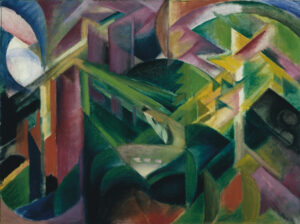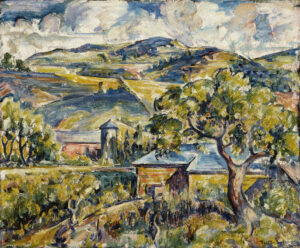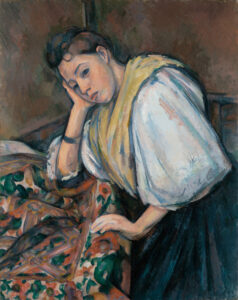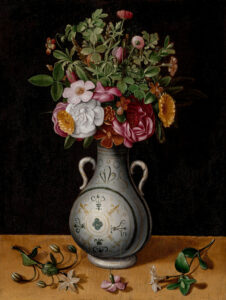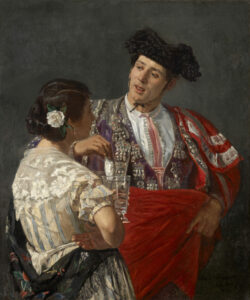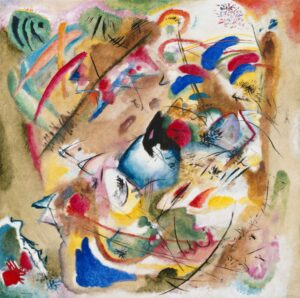Édouard Manet’s “The Spanish Singer” (1860) presents a figure of extraordinary vitality, captured in a moment of pure artistic expression.
This masterwork brilliantly demonstrates Manet’s fascination with Spanish art, particularly that of Velázquez and Goya, whose freedom of brushwork and dramatic use of contrast he deeply admired.
The singer, dressed in characteristic Spanish style with his wide-brimmed black hat and dark jacket contrasting against a crisp white shirt, assumes a relaxed yet theatrical pose on a rustic green bench. The atmosphere is intimate, almost confidential, enhanced by the dark background that accentuates the primary subject. Details are rendered with remarkable precision: the texture of the golden guitar, the white knot of the scarf, the folds of clothing, and the carefully placed accessories on the floor—a red pitcher and onions that add a touch of Spanish still life to the composition. The painting’s luminosity is masterfully orchestrated, creating a chiaroscuro effect that evokes the Spanish masters while heralding modernism.
Additional Information
- Title: “The Spanish Singer” (Le Guitarrero)
- Artist: Édouard Manet (1832-1883)
- Date: 1860
- Dimensions: 147.3 × 114.3 cm
- Location: The Metropolitan Museum of Art, Fifth Avenue, New York, Gallery 810
- https://www.metmuseum.org/art/collection/search/436944
Édouard Manet (1832-1883). Painted when he was just 28 years old, this work marks a pivotal moment in Manet’s career. A revolutionary artist who played a crucial role in the transition from academic art to modern painting, Manet created this canvas after studying Spanish masterpieces at the Louvre and during a formative journey to Madrid.
Here, he breaks with academic conventions while demonstrating his technical mastery through bold brushstrokes, striking contrasts, and a composition that is paradoxically both theatrical and natural. This work already signals the future innovations that would establish him as a central figure in the emerging Impressionist movement.


